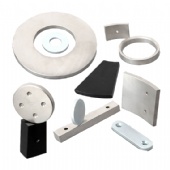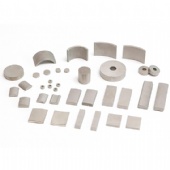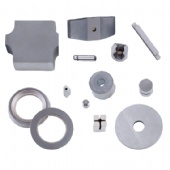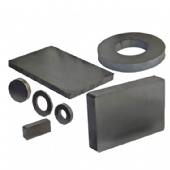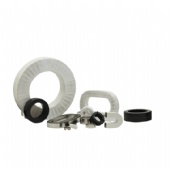Amorphous and Nanocrystalline Soft Magnetic Material
Product name : Amorphous and Nanocrystalline Soft Magnetic Material
Model No. : GMG1-SA
Products Category: > Soft Magnetic Materials

Soft Magnetic Material
Material can be divided into ferromagnetism, ferrimagnetism, paramagnetism, diamagnetism, and anti-ferromagnetism based on their magnetism behavior and bulk magnetic susceptibility. Materials with ferromagnetism or ferrimagnetism are collectively referred to as magnetic materials. Magnetic materials can be further subdivided into soft magnetic materials, permanent magnetic materials, gyromagnetic materials, rectangular hysteresis materials, and piezomagnetic materials. Soft magnetic materials which otherwise known as soft magnet, is a corresponding concept against hard magnet. Those unfamiliar with magnetism are easy to misinterpret “soft” and “hard” from literally or material hardness, then mistake soft magnet for rubber magnet. In reality, the words “hard” and “soft” here is not mechanical but magnetism. Soft magnetic material is a type of magnetic material which able to quickly respond to change of the external magnetic field and obtain high magnetic flux density under low loss. Soft magnet possesses low coercivity and high permeability, therefore, it can be easily magnetized and demagnetized. Soft magnetic material is widely used in magnetic cores of transformers, inductors, motors, and generators.
Amorphous and Nanocrystalline Soft Magnetic Material
Amorphous magnetic material transcented the scope of traditional crystalline magnetic material and thus regarded as an important milestone in the progress of magnetic materials. Amorphous and nanocrystalline magnetic material greatly broaden the research, production, and application of magnetic materials. Amorphous and nancrystalline soft magnetic material is also categorized as metal soft magnetic material from viewpoints of composition and development foundation.
▲Amorphous Soft Material:
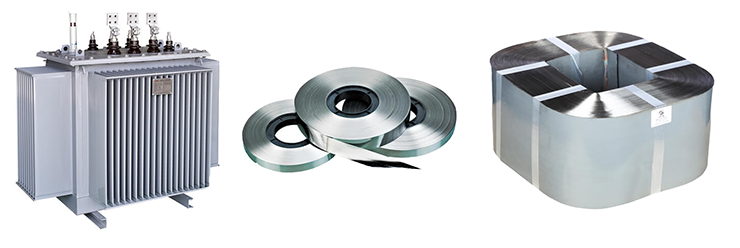
Solid material can be classified into crystal, amorphous and quasicrystal according to the atomic arrangement. Among them, amorphous materials own a well-defined short-range order, but no long-range order. Amorphous alloys do not have the grain structure and thus show isotropic on magnetic properties. In the meanwhile, amorphous structure does not involve dislocations and grain boundaries, hence exhibit high permeability and low coercivity. Besides, amorphous soft magnetic material possesses low electrical resistivity so that generate low eddy current loss in high frequency applications. Non-load loss of iron base amorphous strip is only a third to a quarter of traditional silicon steel. Therefore, it can significantly reduce losses in the electric power industry.
▲Nanocrystalline Soft Magnetic Material:
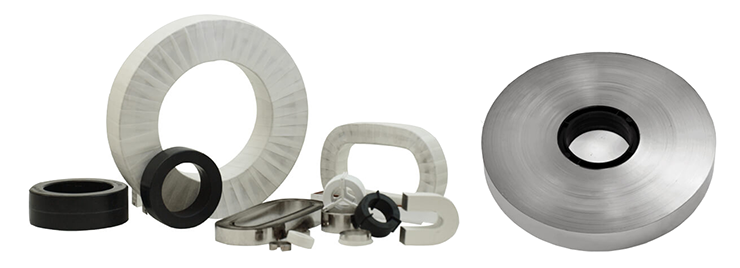
In 1988, Hitachi Metals developed the first nanocrystalline soft magnetic material by processing crystallization treatment to amorphous alloy, then name “FINEMET”. Such alloy combined high magnetic flux density of the iron base amorphous alloy and high magnetic permeability and low loss of cobalt base amorphous alloy. Additionally, it is a low-cost iron base material. The invention of nanocrystalline soft magnetic material is a new breakthrough in the development of soft magnetic material. The commonly used nanocrystalline soft magnetic material already includes Finemet, Nanoperm, Hitperm and Nanomet nowadays. Nanocrystalline soft magnetic material is capable of replace cobalt base amorphous alloy, permalloy and soft ferrites in high frequency power electronics and electronic information field.
---The End---
Send Inquiry :
Products Category
Featured Products
Contact Us
Name: April Yang
Tel: 0086-1560-1120-906
E-mail: [email protected]
Add: No. 18, Sihai Road, BDA, Beijing, China
Whatsapp: 0086 1560 1120 906
Wechat: 0086 1560 1120 906
QQ: 1013104078





